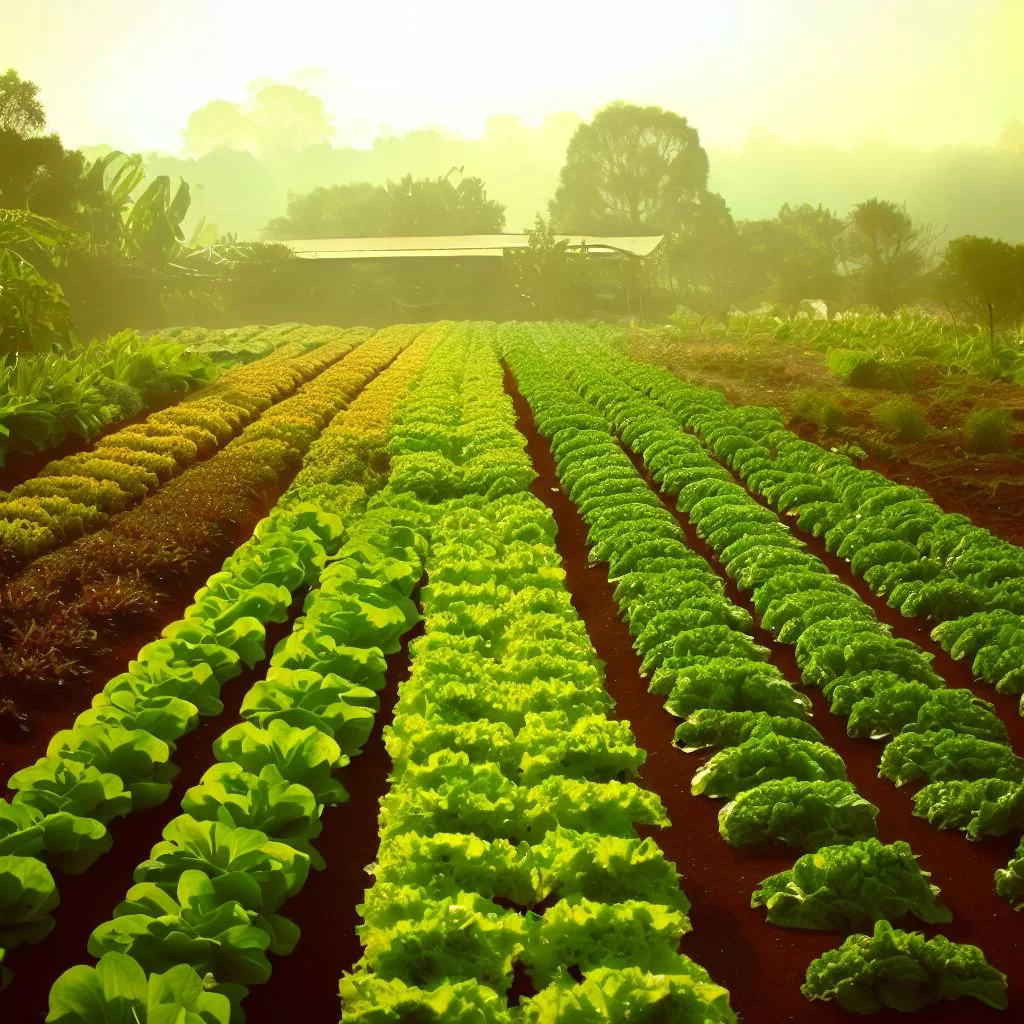Crop Rotation

Crop rotation is a farming technique where different types of crops are planted in the same area in sequential seasons or years. The practice involves rotating the types of crops grown in specific fields over time, usually in a planned sequence. This method offers several benefits:
- Nutrient Management: Different crops have different nutrient needs. By rotating crops, farmers can prevent depletion of specific nutrients in the soil, as different plants draw different nutrients from the soil.
- Pest and Disease Management: Continuous planting of the same crop can lead to a buildup of pests and diseases that target that particular crop. Rotating crops disrupts the life cycles of pests and pathogens, reducing their populations and the need for chemical interventions.
- Weed Control: Certain crops can suppress weeds or have different root structures that break up soil differently, making it harder for weeds to establish. Rotating crops can help control weed populations naturally.
- Soil Health: Rotating crops helps maintain soil structure and fertility by reducing erosion, improving water retention, and promoting beneficial microbial activity.
Common crop rotation systems include alternating between crops with deep roots and shallow roots, legumes (which fix nitrogen in the soil) and non-legumes, and plants from different botanical families to minimize the risk of diseases specific to certain plant families.
Crop rotation has been practiced for centuries and remains a fundamental principle in modern sustainable agriculture.
फसल चक्र एक कृषि तकनीक है जहाँ विभिन्न प्रकार की फसलें एक ही क्षेत्र में क्रमिक मौसमों या वर्षों में लगाई जाती हैं। इस अभ्यास में समय के साथ विशिष्ट क्षेत्रों में उगाई जाने वाली फसलों के प्रकारों को आमतौर पर एक योजनाबद्ध क्रम में बुवाई शामिल है। यह विधि कई लाभ प्रदान करती है:
- पोषक तत्व प्रबंधन: विभिन्न फसलों की पोषक तत्व संबंधी जरूरतें अलग-अलग होती हैं। फसलों को घुमाकर, किसान मिट्टी में विशिष्ट पोषक तत्वों की कमी को रोक सकते हैं, क्योंकि विभिन्न पौधे मिट्टी से अलग-अलग पोषक तत्व खींचते हैं।
- कीट और रोग प्रबंधन: एक ही फसल को लगातार बोने से कीट और बीमारियाँ पैदा हो सकती हैं जो उस विशेष फसल को निशाना बनाती हैं। फसलों को घुमाने से कीटों और रोगजनकों का जीवन चक्र बाधित हो जाता है, जिससे उनकी आबादी कम हो जाती है और रासायनिक हस्तक्षेप की आवश्यकता कम हो जाती है।
- खरपतवार नियंत्रण: कुछ फसलें खरपतवारों को दबा सकती हैं या उनकी जड़ें अलग-अलग होती हैं जो मिट्टी को अलग-अलग तरीके से तोड़ती हैं, जिससे खरपतवारों को स्थापित करना कठिन हो जाता है। फसलों को घुमाने से प्राकृतिक रूप से खरपतवार की आबादी को नियंत्रित करने में मदद मिल सकती है।
- मृदा स्वास्थ्य: चक्रित फसलें कटाव को कम करके, जल प्रतिधारण में सुधार करके और लाभकारी सूक्ष्मजीव गतिविधि को बढ़ावा देकर मिट्टी की संरचना और उर्वरता को बनाए रखने में मदद करती हैं।
- बढ़ी हुई उपज: फसलों को घुमाने से कुल उपज में वृद्धि हो सकती है क्योंकि यह मिट्टी के पोषक तत्वों के उपयोग को अनुकूलित करता है और कीटों या बीमारियों के कारण फसल की विफलता के जोखिम को कम करता है।
सामान्य फसल चक्र प्रणालियों में कुछ पौधों के परिवारों के लिए विशिष्ट बीमारियों के जोखिम को कम करने के लिए गहरी जड़ों और उथली जड़ों वाली फसलों, फलियां (जो मिट्टी में नाइट्रोजन को स्थिर करती हैं) और गैर-फलियां, और विभिन्न वनस्पति परिवारों के पौधों के बीच बारी-बारी से शामिल करना शामिल है।
फसल चक्र का अभ्यास सदियों से किया जाता रहा है और यह आधुनिक टिकाऊ कृषि में एक बुनियादी सिद्धांत बना हुआ है।

और भी पढ़े –





Leave a Reply